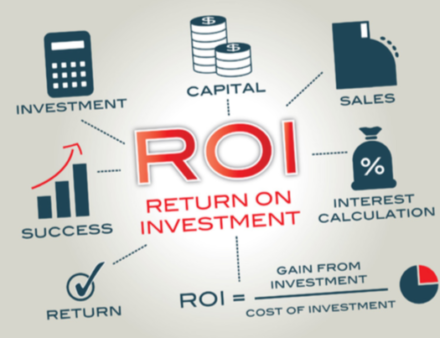May 13, 2019
Analytics basics for digital marketing
Let’s look at the basics of how Google, Facebook and Linkedin actually work!

Yes, everyone is telling you how powerful and targeted Google, Facebook and Linkedin are, yet you either don't know where to start, or you are pumping in crazy $ for little return. So, how do they actually work?
It’s never been easier to get
up and running on the big digital marketing platforms, Google, Facebook and LinkedIn.
Small businesses are continuing to increase their spend in those areas, though from my experience this continuous investment is often based on a hopeful assumption that it’s all working. What you really need is hard data that’s showing your return on investment (ROI).
So here we go, these are the minimum set of analytics that you should be setting up if you’re going to be spending money on digital advertising via Google, Facebook or LinkedIn.
Google Analytics
The easiest place to get started is Google Analytics.
There are hundreds of different statistics that Google Analytics can tell you about the traffic on your website and it’s worth spending a couple of hours digging around in the console to get an understanding of it all, however here are the four most helpful features for tracking your digital marketing ROI.
Feature 1 - Web page views and user sessions
Page views are exactly as they suggest, the number of times an individual page has been viewed. You should see these increase as you start using your digital marketing campaigns to drive prospects to your content. To get a more robust figure you should also keep an eye on the number of user sessions as that figure tells you how many individual people came to view your content, each of them may have looked at four (4) pages, in which case your page views will be four (4) times higher than your user sessions.
You get these statistics for every page on your site as soon as you add the Google Analytics tag to your website.
Feature 2 - Events
Often you want to track something like a button click and there’s no way to see that from the Page Views report. For this scenario Google Analytics can track user interaction events within the page. This type of tracking is great for seeing which parts of the page are attracting prospects and which parts aren’t getting any interaction at all.
You will need to get your web developer to apply event tracking to each of the elements you’re interested in.
Feature 3 - Goals
Google Analytics allows you to configure “goals” which are important milestones in your user activity. Typical goals might be reaching a certain page such as a form submission confirmation page, or perhaps a particular type of event. Once you have your goals configured you can track the success of your site at a glance.
You can configure your own goals within the Google Analytics web console.
Feature 4 - Campaigns
If you’re going to do a big marketing push then you’ll want to be able to see how that initiative performs compared to others, and in Google Analytics you can use campaigns to do that.
For a campaign to work you must be directing your prospects to a website that has Google Analytics setup. You can then go to this URL builder tool to configure your Campaign:
https://ga-dev-tools.appspot. com/campaign-url-builder/
The only mandatory details are the website url itself and a campaign source, which is simply a name that’s meaningful to you. There are other fields too and they’re great for adding extra layers of granularity to your reporting, but they’re not essential for your first try.
The URL builder will give you a URL like this:
https://www.yourwebsite.com. au/?utm_source=edm-jan-2019
You should use that URL in your EDM campaign and any clicks that come through from that link can be clearly attributed to that EDM campaign in your Google Analytics.

The really powerful thing about network. Whenever you configure and activate ads in Google Ads you will automatically get some good statistics around the number of impressions and clicks that you’ve received. Those details are great for identifying which ads are the most attractive to prospects but it’s useless for seeing which ads actually drive the most business on your website. This is where you need to start tracking conversions and conveniently you can connect your Google Ads account to your Google Analytics account for exactly that purpose.

Once you’ve connected your Ads and Analytics accounts you will need to create an Ads Conversion Tracking Id and when you’re doing that you’ll define the type of event that you’re looking for when tracking a conversion. That whole process will give you a tracking ID that your web developer will need to add to your website. Once that’s done you’ll be able to see exactly which Google Ads lead to conversions on your website AND if you indicate the monetary value of a conversion then you will also be able to see the Cost per Conversion for each of your ads and keywords within your Google Ads console.

Facebook and LinkedIn
Facebook and LinkedIn offer a very similar type of conversion tracking process though they don’t connect to Google Analytics. For both of those platforms you’re going to need your web developer to add their separate javascript tags to your website.
The Facebook tag is referred to as a Facebook Pixel and the LinkedIn equivalent is called the LinkedIn Insights Tag.
The Facebook Pixel will automatically track Page Views but if you want it to track a specific action then you will need your web developer to add that extra conversion event to your website code.
The LinkedIn Insights Tag is a bit different in that it will automatically track all Page Views and that’s all it will capture. If you want to track conversions for LinkedIn Ads then you will need to direct your leads to a specific page which only displays when a conversion has occurred. Once you have that page flow in place you can then configure page views with that specific URL as a conversion.
It may seem like a fiddly bit of setup, and I’m not going to lie, it is, BUT you now have really great insights on how your digital marketing ads are performing according to your conversion metrics and you can truly start to measure the ROI of each campaign.










